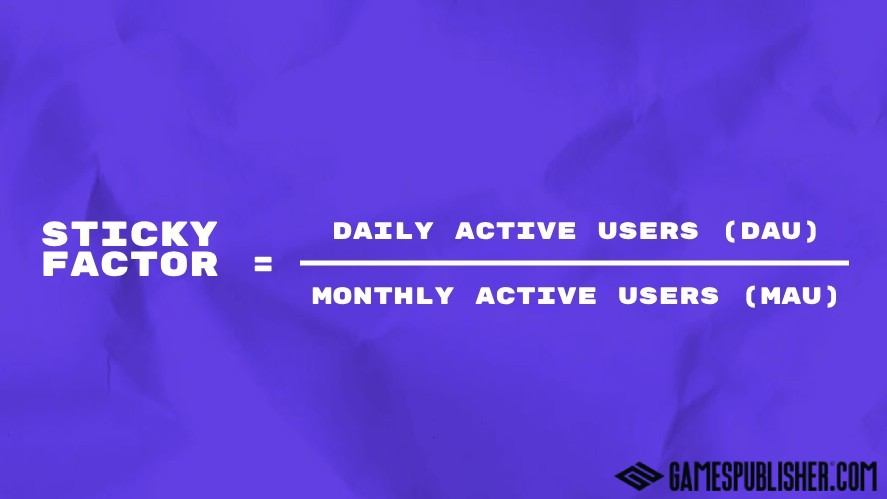In the huge world of gaming, competition is something that is inevitable for game developers and game publishers. They have to ensure games are always in top-notch quality, attract targeted players, and bring steady revenue streams.
Thus, just having cool ideas is never enough to be at the top of the market. Game publishing entities have to continuously measure their efficiency and optimize their games along the way.
That’s the reason Key Performance Indicators (KPIs) appear to assist.
Game publishers use KPIs as tools for success. These metrics provide publishers with valuable insights into game performance, player behavior, and market trends.
From this, video game publishers can make smarter decisions to enhance game performance and profitability.
Understanding KPIs in Game Publishing
KPIs are like special tools that help game publishers figure out how well their games are doing in the gaming world.
KPIs in game publishing include various success metrics, such as:
- Player acquisition cost
- Churn rate
- Average revenue per user
- And so much more!
These game KPIs are super important in the gaming industry because they show if a game is doing well or if it needs some improvements.
Based on their provided performance information, developers, publishers, and even investors can understand what’s going on with their games and make decisions based on that.
Core KPIs for Game Publishing
When it comes to measuring game success, there are certain KPIs that game publishers should look at to evaluate how well their games are performing and make informed decisions.
1. Average Revenue Per User (ARPU)
This is the key indicator that showcases the profitability of your players. It helps you understand how much revenue each player can generate for your games.
The calculation is quite simple as follows:
APRU = Total revenue / Total number of active users
Obviously, revenue can come from various sources, including download fees, subscription fees, in-game purchases, and other monetization methods.
So, understanding and improving ARPU is especially crucial if you want to maximize the profitability of your game.
You can observe ARPU and make decisions regarding pricing and marketing campaigns to make sure you can gain the most among players.
So, how can you improve ARPU?
Here are some strategies for you to consider:
Firstly, you can try different pricing strategies, like offering discounts for in-game purchases or subscription options. Moreover, practice A/B testing on pricing models and see how players react to change.

Secondly, you should focus on retaining users for a longer period.
You can do this by regularly updating your game with your new content and events. This keeps players excited all the time and willing to invest more money in your game.
Lastly, it’s recommended that you segment your user base to tailor your monetization strategies.
Not all players are the same. That’s why you have to divide them into different groups and offer promotions that are more likely to resonate with them.
2. Customer Acquisition Cost (CAC)
Customer Acquisition Cost is another important indicator that measures how much it costs to acquire new customers for your game company.
So, managing CAC effectively helps you make sure your money is well spent on, for example, marketing or sales strategies to acquire new players.
There are various ways to calculate this game development KPI, but the most common is as follows:
CAC = Total marketing and sales expenses / Number of new customers
As this indicator is important in ensuring the profitability of your game, you should find ways to optimize CAC for better ROI.
You should focus your advertising efforts on channels or platforms that are more likely to attract ideal players. This way, you can minimize as much as possible the wasted spending on marketing campaigns.
Also, continuously monitor and analyze your marketing and sales strategies to find areas for improvement.
This ensures that you’ve always optimized your approach to attract the right players and maximize your return on investment.
At the same time, don’t forget to compare your CAC with the industry benchmarks to see where your business stands in the market and find ways and if there’s room for improvement.
3. Churn Rate
Churn rate is a big deal for any game company as it measures how many players drop out of a game over a certain period of time.
A high churn rate indicates that players are leaving your game, which can lead to a decline in revenue and overall success. In contrast, a low churn rate indicates that players are satisfied with your game and tend to stay longer.
This is how to calculate this metric within a specific period:
Churn Rate = (Number of players churned / Total number of players) * 100
No one wants this rate to be high, so you have to regularly observe this rate to find out if players are leaving your game and why.
After identifying the reason behind player churn, you can take steps to address issues and improve player retention.
This may require you to focus on improving various aspects such as game quality, game experience, customer support, and so much more.
However, it is necessary to compare your churn rates with industry benchmarks. This helps you measure how well your game is performing relative to others in the same industry.
For example, a churn rate of less than 5% is regarded as ideal in the gaming industry.
4. Player Engagement Metrics
This is one of the most important video game success metrics because it measures how much players are involved in your game.
There are some key engagement indicators, such as session depth, average screens per visit, and daily active users.
To be more specific, session depth measures how far players progress within a single gaming session. While average screens per visit indicate the average number of screens or pages players view during each session.
Daily Active Users (DAU) is also an important indicator when measuring player engagement.
It refers to the number of unique users who engage with a game within a single day. The higher the number of daily active users, the stronger the interest of players in the game.
So, to keep players engaged in your game, you should regularly update them with new content, features, levels, challenges, or events.
This makes them feel the new experience and return to your game from time to time. Or you can provide incentives for regular engagement to motivate people to return to the game on a daily basis, such as daily login rewards and exclusive bonuses.
5. Financial KPIs
In the world of game publishing, success isn’t just about entertaining players; it’s also about how much money it can create for the people who created it.
As a result, there are some financial KPIs that are like guides that help game publishers make smart decisions about making money.
Let’s look at the three important indicators:
- Lifetime Value (LTV): how much money you can expect to make from each player over time.
- Cost Per Acquisition (CPA): how much it costs to get a conversion from customers, like purchase or signing up.
- Average Revenue Per User (ARPU): the average amount of money each player generates for the game.
By looking at these financial KPIs, you can learn how to spend your budget smartly and hold the key to making your game financial success in the gaming world.
High-Level Game Development KPIs
It’s essential to look at certain KPIs to understand how well your games are doing in the market.
These KPIs offer valuable insights into players’ behavior and guide game developers to optimize games for success, such as:
Retention Rate
Retention rate refers to the number of players that keep coming back to the game over time.
It’s especially important because it tells us if players are enjoying the game enough to keep playing again and again.
Conversion Rate
Conversion Rate is about how many players actually spend money on your game.
This could be people who upgrade from a free demo to the full version or those who buy in-game items in free-to-play games. So you can look at this indicator and figure out which in-game items are the most popular.
The Golden Cohort
Regarding talking about game development metrics, you should not overlook Golden Cohort as they can affect the success of your game.
Golden Cohort refers to people who experience your game in the very early time after the official launch, like installing your game within a week after release.
This group of people tends to invest their time in your game and provide you with valuable feedback.
They’re like a baseline for game developers to understand the preferences and behaviors of users and tailor games based on that to meet the general needs.
So, focusing on catering to Golden Cohort can enhance the longevity of the game and increase the possibility of becoming the most successful game of all time.
Special Considerations for Free-to-Play Games
Free-to-play games don’t require players to pay upfront costs, so they often rely on players spending money while they play to turn a profit.
To attract new users, game studios often invest in ads, which means every person who downloads the game comes with a cost known as CPI (cost per install).
While CPI shows how much it costs to get a user to install the game, game developers often compare this with LTV (lifetime value), which shows how much players spend on the game over time.
This, by far, helps game companies calculate the Return on Investment (ROI). If the ROI falls into the negatives, it means the game is running at a loss.

There is also another helpful metric called the Sticky Factor. It’s a way to see how many people keep using your app compared to how many use it in a month.
To find the Sticky Factor, you divide the number of daily users by the number of monthly users.
For example, if your Sticky Factor is 10%, it means for every new player who starts using your app, there’s a 10% chance they’ll use it every day.
Strategic Implementation of KPIs
As KPIs give developers the data to make informed decisions and drive growth, it’s necessary to break down the process into simple steps to help you harness the power of data and optimize your game for success.
- Setting Clear Goals: Define specific goals you want to achieve with your game.
- Plan Steps to Reach Goals: Break down the necessary actions to reach your objective.
- Choosing the Right KPIs: Select the key metrics that matter most to your game’s success.
- Check Progress Regularly: Regularly review and analyze each data to see if you’re on track.
However, it’s important to know that implementing KPIs effectively is not just about collecting data; it’s also about using that data to make decisions.
Once you’ve gathered and analyzed your KPIs, it’s essential to translate those insights into strategies and actions to improve your game. This might include making changes to the game designs, marketing strategies, and so much more.
Case Study: The Success of the Most Successful Game Ever
There are certain games that leave marks in the gaming industry, and Minecraft is still one of the most successful games of all time that captured the hearts of players worldwide.
In Minecraft, players can gather materials, make tools, and construct pretty much all things from blocks.
Since its release in 2009 by Markus ‘Notch’ Persson, it has gained various attention from the crowds. Until now, there have been more than 300 million copies sold across multiple platforms, which brings Minecraft substantial revenue.
We should analyze some KPIs that provide valuable insights into the factors that contribute to the success of Minecraft.
Specifically, in 2022, Minecraft earned a revenue of $365 million, with an average of 90 million active players each month.

Therefore, we can estimate the average revenue per user (ARPU) for Minecraft in one month to be $30.4 million divided by 90 million, which equals approximately $0.33.
Despite the relatively low average revenue per user compared to other games, Minecraft is still a huge success because it attracts a massive audience through strong community and cross-platform availability.
This means that even though each player spends a little, there are millions of players, so the game makes a lot of money overall.
Minecraft’s impressive revenue is directly correlated with its large user base over the years.
In previous years, the game had 131 million and 93 million monthly users in 2020 and 2021, respectively, generating revenues of $415 million and $380 million.
Thus, the success of Minecraft offers valuable lessons for other game development projects.
Developers should prioritize player engagement and build a strong community to increase their chances of success. When lots of people play and enjoy the game, even small amounts of money add up to big profits.
Conclusion
All in all, KPIs play an important role in the success of game development. They provide valuable insights into various aspects of a game’s performance.
This helps game developers make smart decisions to grow games and maximize profitability.
As the gaming landscape continues to evolve, using KPIs smartly will always be key to dominating the market.
So, game developers should make it a priority to keep learning about KPIs and find out how to use them the most effectively.
This is an ongoing journey that needs to be learned and adapted along the way.
However, the result is satisfaction. This not only helps developers make games that players enjoy but also leads to long-term success in the gaming industry.

